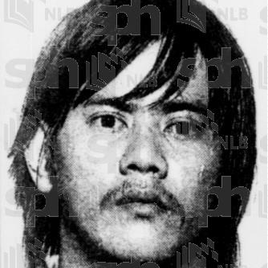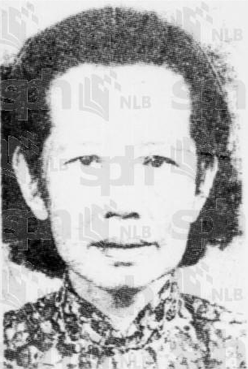
d: 1990
Teo Boon Ann
Summary
Name:
Nickname:
Richard Teo Min Hua / Ah Seng / SunnyYears Active:
1983Status:
ExecutedClass:
MurdererVictims:
1Method:
Strangulation / BludgeoningDeath:
April 20, 1990Nationality:
Singapore
d: 1990
Teo Boon Ann
Summary: Murderer
Name:
Teo Boon AnnNickname:
Richard Teo Min Hua / Ah Seng / SunnyStatus:
ExecutedVictims:
1Method:
Strangulation / BludgeoningNationality:
SingaporeDeath:
April 20, 1990Years Active:
1983Date Convicted:
February 3, 1987bio
Teo Boon Ann was a young man of about 23 years old at the time of the murder in 1983. He was known to work part‑time as a temple medium, a role involving spiritual or ritualistic practices, which may have given him some local standing or familiarity with esoteric or occult communities.
Teo’s life outside of the temple was less admirable. He was a married man but led a double life, deceiving his girlfriend Tan Chai Mui with multiple fabricated identities, including “Richard Teo Min Hua,” “Ah Seng,” and “Sunny.” He disguised his voice on the telephone and convinced her he was three different men, at times asking her for large sums of money and jewelry to settle debts. Despite being married, Teo managed to manipulate Tan into a relationship, while hiding his real identity until later revelations.
By 1983, Teo was in deep financial distress. Gambling losses and debts appear to have pushed him toward crime. When he learned of an elderly woman, Chong Kin Meng, who lived quietly in Clementi with her foster son and daughter-in-law, Teo began plotting a robbery.
murder story
On the morning of 31 October 1983, 66-year-old Chong Kin Meng was at home alone. That evening, her foster son’s wife, Ong Chin Choo, returned from work and found Chong dead in the living room. The body bore extensive bruises on her neck, arms, and head, with signs of both strangulation and blunt force trauma.

Police classified the case as murder. Inside the flat they discovered a wedding invitation card addressed to someone else, with handwriting later matched to Teo. Curiously, there was no sign of forced entry or major theft.
In the early days of the investigation, Teo himself performed a bizarre act that raised suspicion. At the request of his father, Teo Liang Heng, who had been wrongly linked to the case through the wedding card, Teo entered a trance before Chong’s foster family. Pretending to channel the spirit of the murdered woman, he reenacted details of the killing and drew an accurate sketch of the flat’s layout. While it was meant to deflect suspicion, it instead drew police attention. How could he know so much about the crime scene unless he was involved?
On 11 November 1983, Teo was arrested for an unrelated matter, and when questioned about Chong’s murder he confessed. His fingerprints and handwriting tied him directly to the fake wedding card. He was charged with murder and remanded for trial.
Teo’s murder trial began on 19 January 1987 before Justice Punch Coomaraswamy and Judicial Commissioner Chan Sek Keong, with Ho Meng Hee as prosecutor and J. S. Khosa as defense counsel.
Teo admitted he entered Chong’s flat intending to rob her, using the wedding card and cakes as a ruse. When he could not find money, he claimed she caught him in the act and tried to call the police. According to Teo, she later grabbed a knife and attacked him, forcing him to strangle her briefly and then strike her with a wooden stool in panic. He insisted he did not intend to kill and asked to be convicted of the lesser offense of culpable homicide.
The prosecution dismantled this claim. Forensic pathologist Professor Chao Tzee Cheng testified that Chong’s injuries — fractured ribs, thyroid cartilage, and massive bruising — could only result from sustained strangulation with great force and multiple deliberate blows to the head. Evidence suggested Teo had pressed on her chest while strangling her, further crushing her frail frame.
Teo’s girlfriend, Tan Chai Mui, delivered the most damning testimony. She told the court that Teo had phoned her beforehand, asking her to help in a robbery plan and reminding her that “they must kill Chong if necessary.” She even presented her diary, where she had recorded these conversations.
The court also heard about Teo’s manipulative behavior — using three fake identities to deceive Tan into lending him money. This evidence painted a picture of a man who was calculating, deceptive, and fully capable of premeditation.
On 3 February 1987, the judges found Teo guilty of murder. Justice Coomaraswamy noted that Chong, a frail 66-year-old woman, was no match for Teo’s strength. Even if she had held a knife, the ferocity of his attack went far beyond any claim of self-defense. The judges concluded Teo had intended to silence Chong to prevent identification, and his conduct showed “callous and ruthless” disregard for human life.
He was sentenced to death. Teo displayed little emotion, while his family and former girlfriend watched silently.
Teo appealed, but on 15 August 1988, the Court of Appeal dismissed his case, ruling that his defense was inconsistent with the forensic evidence.
After nearly seven years in custody, 30-year-old Teo Boon Ann was hanged at Changi Prison on 20 April 1990. Ten days later, the Singapore Prison Service publicly confirmed the execution had been carried out at dawn.